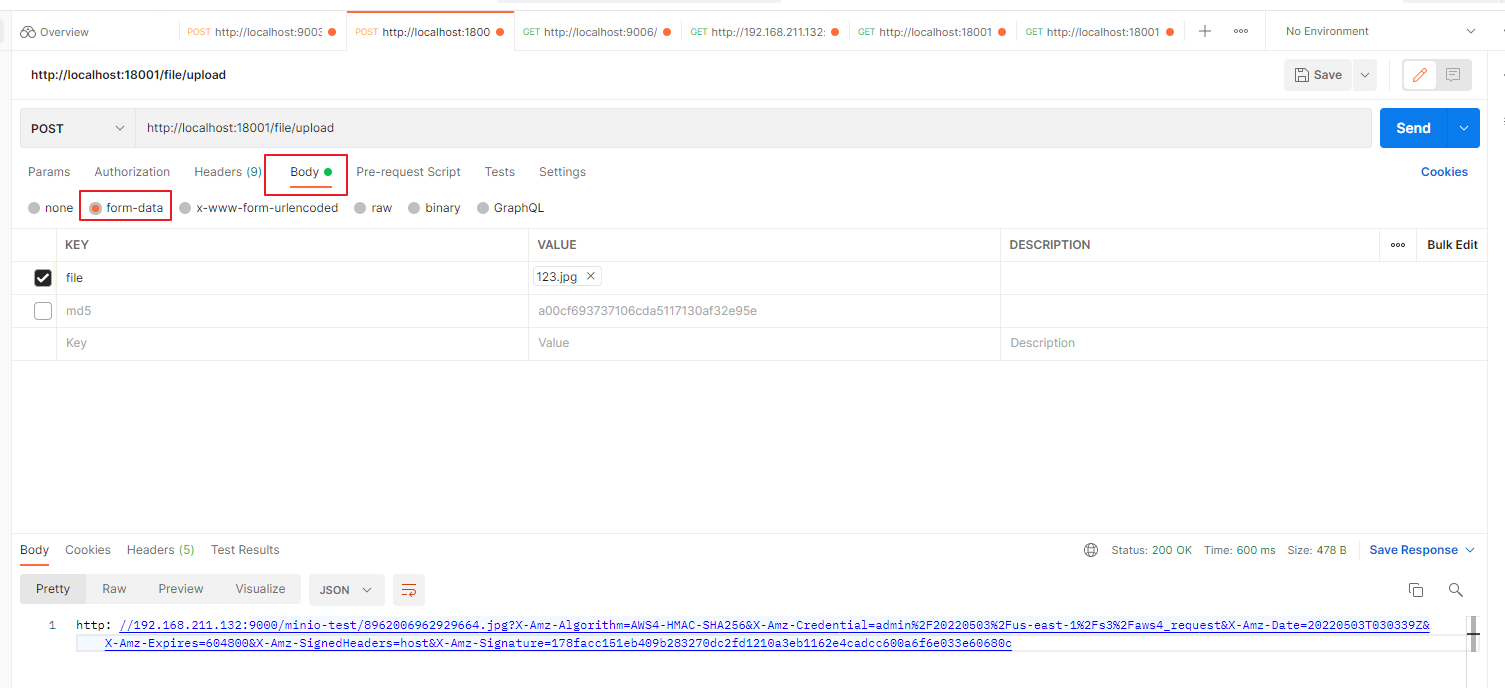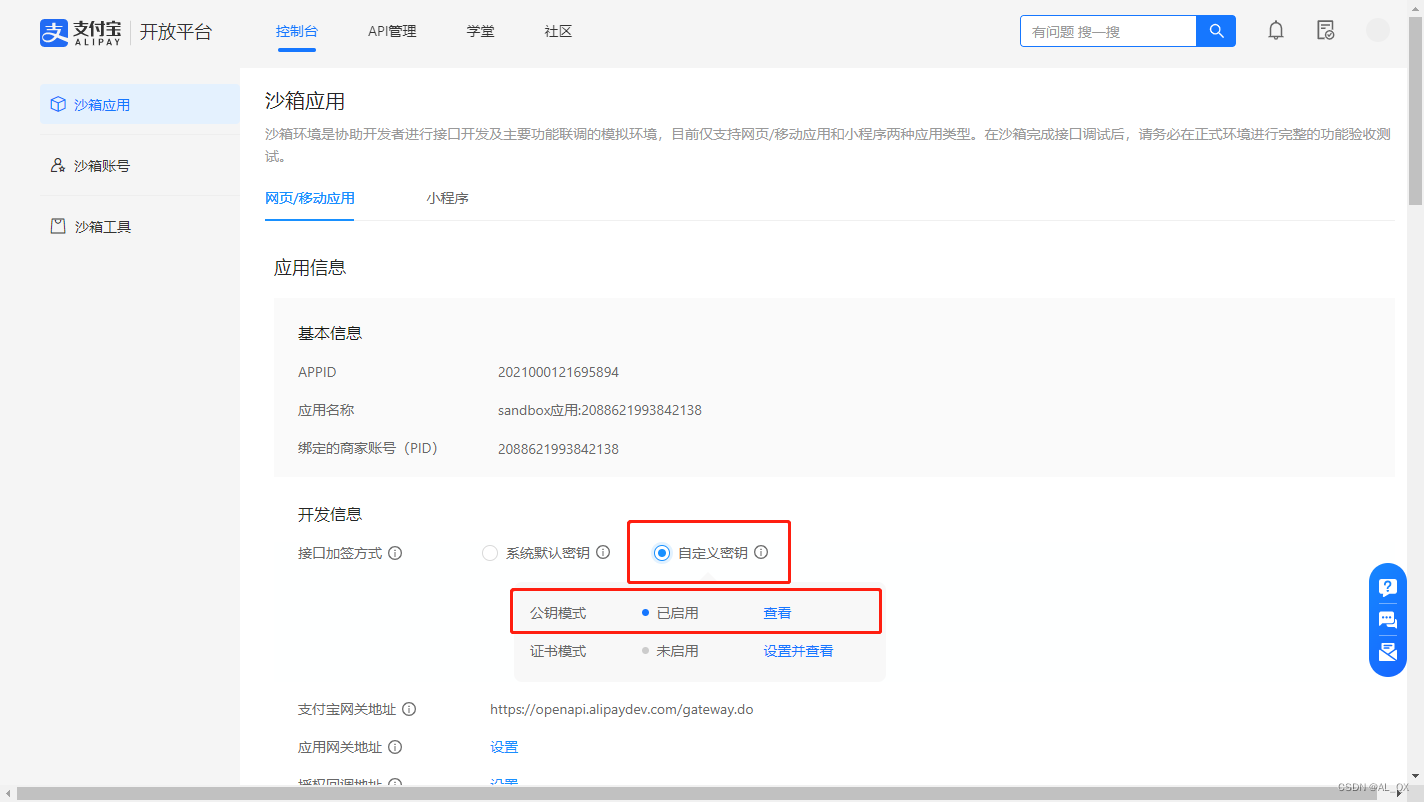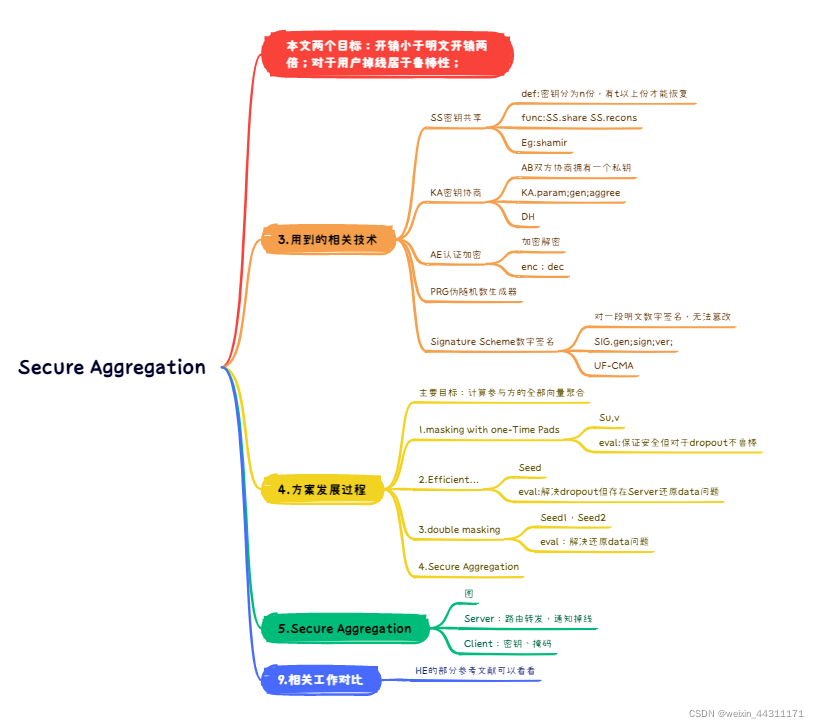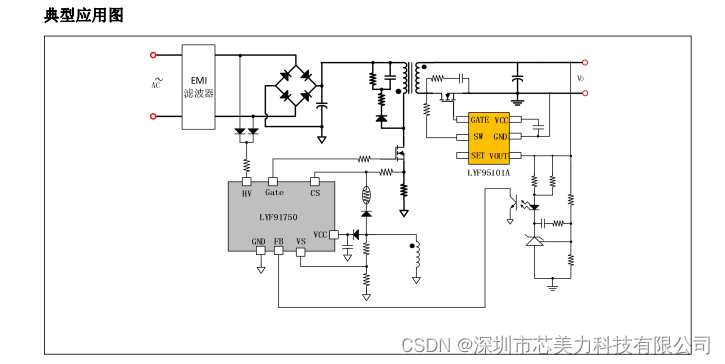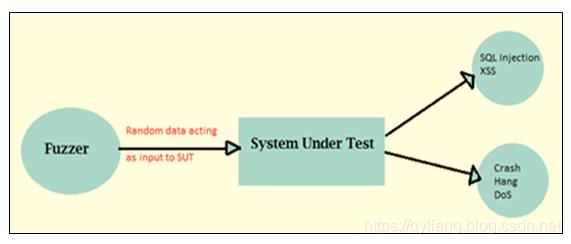我们看招聘信息的时候,经常会看到这一点,需要具备SSH框架的技能;而且在大部分教学课堂中,也会把SSH作为最核心的教学内容。
但是,我们在实际应用中发现,SpringMVC可以完全替代Struts,配合注解的方式,编程非常快捷,而且通过restful风格定义url,让地址看起来非常优雅。
另外,MyBatis也可以替换hibernate,正因为MyBatis的半自动特点,我们程序猿可以完全掌控SQL,这会让有数据库经验的程序猿能开发出高效率的SQL语句,而且XML配置管理起来也非常方便。
好了,如果你也认同我的看法,那么下面我们一起来做整合吧!
在写代码之前我们先了解一下这三个框架分别是干什么的?
相信大以前也看过不少这些概念,我这就用大白话来讲,如果之前有了解过可以跳过这一大段,直接看代码!
-
SpringMVC:它用于web层,相当于controller(等价于传统的servlet和struts的action),用来处理用户请求。举个例子,用户在地址栏输入http://网站域名/login,那么springmvc就会拦截到这个请求,并且调用controller层中相应的方法,(中间可能包含验证用户名和密码的业务逻辑,以及查询数据库操作,但这些都不是springmvc的职责),最终把结果返回给用户,并且返回相应的页面(当然也可以只返回json/xml等格式数据)。springmvc就是做前面和后面过程的活,与用户打交道!!
-
spring:太强大了,以至于我无法用一个词或一句话来概括它。但与我们平时开发接触最多的估计就是IOC容器,它可以装载bean(也就是我们Java中的类,当然也包括service dao里面的),有了这个机制,我们就不用在每次使用这个类的时候为它初始化,很少看到关键字new。另外spring的aop,事务管理等等都是我们经常用到的。
-
MyBatis:如果你问我它跟鼎鼎大名的Hibernate有什么区别?我只想说,他更符合我的需求。第一,它能自由控制sql,这会让有数据库经验的人(当然不是说我啦~捂脸~)编写的代码能搞提升数据库访问的效率。第二,它可以使用xml的方式来组织管理我们的sql,因为一般程序出错很多情况下是sql出错,别人接手代码后能快速找到出错地方,甚至可以优化原来写的sql。
SSM框架整合配置
好了,前面bb那么多,下面我们真正开始敲代码了~
首先我们打开IED,我这里用的是eclipse(你们应该也是用的这个,对吗?),创建一个动态web项目,建立好相应的目录结构(重点!)
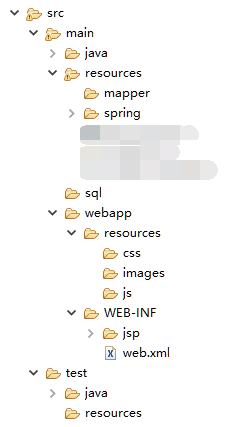
(打了马赛克是因为这里还用不到,你们不要那么污好不好?)
我说一下每个目录都有什么用吧(第一次画表格,我发现markdown的表格语法很不友好呀~)
这个目录结构同时也遵循maven的目录规范~
| 文件名 | 作用 |
|---|
| src | 根目录,没什么好说的,下面有main和test。 |
| | 主要目录,可以放java代码和一些资源文件。 |
| | 存放我们的java代码,这个文件夹要使用Build Path -> Use as Source Folder,这样看包结构会方便很多,新建的包就相当于在这里新建文件夹咯。 |
| | 存放资源文件,譬如各种的spring,mybatis,log配置文件。 |
| | 存放dao中每个方法对应的sql,在这里配置,无需写daoImpl。 |
| | 这里当然是存放spring相关的配置文件,有dao service web三层。 |
| | 其实这个可以没有,但是为了项目完整性还是加上吧。 |
| | 这个貌似是最熟悉的目录了,用来存放我们前端的静态资源,如jsp js css。 |
| | 这里的资源是指项目的静态资源,如js css images等。 |
| | 很重要的一个目录,外部浏览器无法访问,只有羡慕内部才能访问,可以把jsp放在这里,另外就是web.xml了。你可能有疑问了,为什么上面java中的resources里面的配置文件不妨在这里,那么是不是会被外部窃取到?你想太多了,部署时候基本上只有webapp里的会直接输出到根目录,其他都会放入WEB-INF里面,项目内部依然可以使用classpath:XXX来访问,好像IDE里可以设置部署输出目录,这里扯远了~ |
| | 这里是测试分支。 |
| | 测试java代码,应遵循包名相同的原则,这个文件夹同样要使用Build Path -> Use as Source Folder,这样看包结构会方便很多。 |
| | 没什么好说的,好像也很少用到,但这个是maven的规范。 |
我先新建好几个必要的包,并为大家讲解一下每个包的作用,顺便理清一下后台的思路~
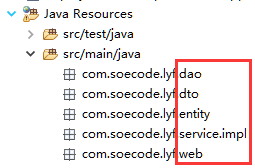
| 包名 | 名称 | 作用 |
|---|
| dao | 数据访问层(接口) | 与数据打交道,可以是数据库操作,也可以是文件读写操作,甚至是redis缓存操作,总之与数据操作有关的都放在这里,也有人叫做dal或者数据持久层都差不多意思。为什么没有daoImpl,因为我们用的是mybatis,所以可以直接在配置文件中实现接口的每个方法。 |
| entity | 实体类 | 一般与数据库的表相对应,封装dao层取出来的数据为一个对象,也就是我们常说的pojo,一般只在dao层与service层之间传输。 |
| dto | 数据传输层 | 刚学框架的人可能不明白这个有什么用,其实就是用于service层与web层之间传输,为什么不直接用entity(pojo)?其实在实际开发中发现,很多时间一个entity并不能满足我们的业务需求,可能呈现给用户的信息十分之多,这时候就有了dto,也相当于vo,记住一定不要把这个混杂在entity里面,答应我好吗? |
| service | 业务逻辑(接口) | 写我们的业务逻辑,也有人叫bll,在设计业务接口时候应该站在“使用者”的角度。额,不要问我为什么这里没显示!IDE调皮我也拿它没办法~ |
| serviceImpl | 业务逻辑(实现) | 实现我们业务接口,一般事务控制是写在这里,没什么好说的。 |
| web | 控制器 | springmvc就是在这里发挥作用的,一般人叫做controller控制器,相当于struts中的action。 |
还有最后一步基础工作,导入我们相应的jar包,我使用的是maven来管理我们的jar,所以只需要在pom.xml中加入相应的依赖就好了,如果不使用maven的可以自己去官网下载相应的jar,放到项目WEB-INF/lib目录下。关于maven的学习大家可以看慕课网的视频教程,这里就不展开了。我把项目用到的jar都写在下面,版本都不是最新的,大家有经验的话可以自己调整版本号。另外,所有jar都会与项目一起打包放到我的github上,喜欢的给个star吧~
pom.xml
<project xmlns="http://maven.apache.org/POM/4.0.0" xmlns:xsi="http://www.w3.org/2001/XMLSchema-instance"xsi:schemaLocation="http://maven.apache.org/POM/4.0.0 http://maven.apache.org/maven-v4_0_0.xsd"><modelVersion>4.0.0</modelVersion><groupId>com.soecode.ssm</groupId><artifactId>ssm</artifactId><packaging>war</packaging><version>0.0.1-SNAPSHOT</version><name>ssm Maven Webapp</name><url>http://github.com/liyifeng1994/ssm</url><dependencies><dependency><groupId>junit</groupId><artifactId>junit</artifactId><version>4.11</version></dependency><dependency><groupId>ch.qos.logback</groupId><artifactId>logback-classic</artifactId><version>1.1.1</version></dependency><dependency><groupId>mysql</groupId><artifactId>mysql-connector-java</artifactId><version>5.1.37</version><scope>runtime</scope></dependency><dependency><groupId>c3p0</groupId><artifactId>c3p0</artifactId><version>0.9.1.2</version></dependency><dependency><groupId>org.mybatis</groupId><artifactId>mybatis</artifactId><version>3.3.0</version></dependency><dependency><groupId>org.mybatis</groupId><artifactId>mybatis-spring</artifactId><version>1.2.3</version></dependency><dependency><groupId>taglibs</groupId><artifactId>standard</artifactId><version>1.1.2</version></dependency><dependency><groupId>jstl</groupId><artifactId>jstl</artifactId><version>1.2</version></dependency><dependency><groupId>com.fasterxml.jackson.core</groupId><artifactId>jackson-databind</artifactId><version>2.5.4</version></dependency><dependency><groupId>javax.servlet</groupId><artifactId>javax.servlet-api</artifactId><version>3.1.0</version></dependency><dependency><groupId>org.springframework</groupId><artifactId>spring-core</artifactId><version>4.1.7.RELEASE</version></dependency><dependency><groupId>org.springframework</groupId><artifactId>spring-beans</artifactId><version>4.1.7.RELEASE</version></dependency><dependency><groupId>org.springframework</groupId><artifactId>spring-context</artifactId><version>4.1.7.RELEASE</version></dependency><dependency><groupId>org.springframework</groupId><artifactId>spring-jdbc</artifactId><version>4.1.7.RELEASE</version></dependency><dependency><groupId>org.springframework</groupId><artifactId>spring-tx</artifactId><version>4.1.7.RELEASE</version></dependency><dependency><groupId>org.springframework</groupId><artifactId>spring-web</artifactId><version>4.1.7.RELEASE</version></dependency><dependency><groupId>org.springframework</groupId><artifactId>spring-webmvc</artifactId><version>4.1.7.RELEASE</version></dependency><dependency><groupId>org.springframework</groupId><artifactId>spring-test</artifactId><version>4.1.7.RELEASE</version></dependency><dependency><groupId>redis.clients</groupId><artifactId>jedis</artifactId><version>2.7.3</version></dependency><dependency><groupId>com.dyuproject.protostuff</groupId><artifactId>protostuff-core</artifactId><version>1.0.8</version></dependency><dependency><groupId>com.dyuproject.protostuff</groupId><artifactId>protostuff-runtime</artifactId><version>1.0.8</version></dependency><dependency><groupId>commons-collections</groupId><artifactId>commons-collections</artifactId><version>3.2</version></dependency></dependencies><build><finalName>ssm</finalName></build>
</project>
- 1
- 2
- 3
- 4
- 5
- 6
- 7
- 8
- 9
- 10
- 11
- 12
- 13
- 14
- 15
- 16
- 17
- 18
- 19
- 20
- 21
- 22
- 23
- 24
- 25
- 26
- 27
- 28
- 29
- 30
- 31
- 32
- 33
- 34
- 35
- 36
- 37
- 38
- 39
- 40
- 41
- 42
- 43
- 44
- 45
- 46
- 47
- 48
- 49
- 50
- 51
- 52
- 53
- 54
- 55
- 56
- 57
- 58
- 59
- 60
- 61
- 62
- 63
- 64
- 65
- 66
- 67
- 68
- 69
- 70
- 71
- 72
- 73
- 74
- 75
- 76
- 77
- 78
- 79
- 80
- 81
- 82
- 83
- 84
- 85
- 86
- 87
- 88
- 89
- 90
- 91
- 92
- 93
- 94
- 95
- 96
- 97
- 98
- 99
- 100
- 101
- 102
- 103
- 104
- 105
- 106
- 107
- 108
- 109
- 110
- 111
- 112
- 113
- 114
- 115
- 116
- 117
- 118
- 119
- 120
- 121
- 122
- 123
- 124
- 125
- 126
- 127
- 128
- 129
- 130
- 131
- 132
- 133
- 134
- 135
- 136
- 137
- 138
- 139
- 140
- 141
- 142
- 143
- 144
- 145
- 146
- 147
- 1
- 2
- 3
- 4
- 5
- 6
- 7
- 8
- 9
- 10
- 11
- 12
- 13
- 14
- 15
- 16
- 17
- 18
- 19
- 20
- 21
- 22
- 23
- 24
- 25
- 26
- 27
- 28
- 29
- 30
- 31
- 32
- 33
- 34
- 35
- 36
- 37
- 38
- 39
- 40
- 41
- 42
- 43
- 44
- 45
- 46
- 47
- 48
- 49
- 50
- 51
- 52
- 53
- 54
- 55
- 56
- 57
- 58
- 59
- 60
- 61
- 62
- 63
- 64
- 65
- 66
- 67
- 68
- 69
- 70
- 71
- 72
- 73
- 74
- 75
- 76
- 77
- 78
- 79
- 80
- 81
- 82
- 83
- 84
- 85
- 86
- 87
- 88
- 89
- 90
- 91
- 92
- 93
- 94
- 95
- 96
- 97
- 98
- 99
- 100
- 101
- 102
- 103
- 104
- 105
- 106
- 107
- 108
- 109
- 110
- 111
- 112
- 113
- 114
- 115
- 116
- 117
- 118
- 119
- 120
- 121
- 122
- 123
- 124
- 125
- 126
- 127
- 128
- 129
- 130
- 131
- 132
- 133
- 134
- 135
- 136
- 137
- 138
- 139
- 140
- 141
- 142
- 143
- 144
- 145
- 146
- 147
下面真的要开始进行编码工作了,坚持到这里辛苦大家了~
第一步:我们先在spring文件夹里新建spring-dao.xml文件,因为spring的配置太多,我们这里分三层,分别是dao service web。
- 读入数据库连接相关参数(可选)
- 配置数据连接池
- 配置连接属性,可以不读配置项文件直接在这里写死
- 配置c3p0,只配了几个常用的
- 配置SqlSessionFactory对象(mybatis)
- 扫描dao层接口,动态实现dao接口,也就是说不需要daoImpl,sql和参数都写在xml文件上
spring-dao.xml
<?xml version="1.0" encoding="UTF-8"?>
<beans xmlns="http://www.springframework.org/schema/beans"xmlns:xsi="http://www.w3.org/2001/XMLSchema-instance" xmlns:context="http://www.springframework.org/schema/context"xsi:schemaLocation="http://www.springframework.org/schema/beanshttp://www.springframework.org/schema/beans/spring-beans.xsdhttp://www.springframework.org/schema/contexthttp://www.springframework.org/schema/context/spring-context.xsd"><context:property-placeholder location="classpath:jdbc.properties" /><bean id="dataSource" class="com.mchange.v2.c3p0.ComboPooledDataSource"><property name="driverClass" value="${jdbc.driver}" /><property name="jdbcUrl" value="${jdbc.url}" /><property name="user" value="${jdbc.username}" /><property name="password" value="${jdbc.password}" /><property name="maxPoolSize" value="30" /><property name="minPoolSize" value="10" /><property name="autoCommitOnClose" value="false" /><property name="checkoutTimeout" value="10000" /><property name="acquireRetryAttempts" value="2" /></bean><bean id="sqlSessionFactory" class="org.mybatis.spring.SqlSessionFactoryBean"><property name="dataSource" ref="dataSource" /><property name="configLocation" value="classpath:mybatis-config.xml" /><property name="typeAliasesPackage" value="com.soecode.lyf.entity" /><property name="mapperLocations" value="classpath:mapper/*.xml" /></bean><bean class="org.mybatis.spring.mapper.MapperScannerConfigurer"><property name="sqlSessionFactoryBeanName" value="sqlSessionFactory" /><property name="basePackage" value="com.soecode.lyf.dao" /></bean>
</beans>
- 1
- 2
- 3
- 4
- 5
- 6
- 7
- 8
- 9
- 10
- 11
- 12
- 13
- 14
- 15
- 16
- 17
- 18
- 19
- 20
- 21
- 22
- 23
- 24
- 25
- 26
- 27
- 28
- 29
- 30
- 31
- 32
- 33
- 34
- 35
- 36
- 37
- 38
- 39
- 40
- 41
- 42
- 43
- 44
- 45
- 46
- 47
- 48
- 49
- 50
- 1
- 2
- 3
- 4
- 5
- 6
- 7
- 8
- 9
- 10
- 11
- 12
- 13
- 14
- 15
- 16
- 17
- 18
- 19
- 20
- 21
- 22
- 23
- 24
- 25
- 26
- 27
- 28
- 29
- 30
- 31
- 32
- 33
- 34
- 35
- 36
- 37
- 38
- 39
- 40
- 41
- 42
- 43
- 44
- 45
- 46
- 47
- 48
- 49
- 50
因为数据库配置相关参数是读取配置文件,所以在resources文件夹里新建一个jdbc.properties文件,存放我们4个最常见的数据库连接属性,这是我本地的,大家记得修改呀~还有喜欢传到github上“大头虾们”记得删掉密码,不然别人就很容易得到你服务器的数据库配置信息,然后干一些羞羞的事情,你懂的!!
jdbc.properties
jdbc.driver=com.mysql.jdbc.Driver
jdbc.url=jdbc:mysql://localhost:3307/ssm?useUnicode=true&characterEncoding=utf8
jdbc.username=root
jdbc.password=
友情提示:配置文件中的jdbc.username,如果写成username,可能会与系统环境中的username变量冲突,所以到时候真正连接数据库的时候,用户名就被替换成系统中的用户名(有得可能是administrator),那肯定是连接不成功的,这里有个小坑,我被坑了一晚上!!
因为这里用到了mybatis,所以需要配置mybatis核心文件,在recources文件夹里新建mybatis-config.xml文件。
- 使用自增主键
- 使用列别名
- 开启驼峰命名转换 create_time -> createTime
mybatis-config.xml
<?xml version="1.0" encoding="UTF-8" ?>
<!DOCTYPE configurationPUBLIC "-//mybatis.org//DTD Config 3.0//EN""http://mybatis.org/dtd/mybatis-3-config.dtd">
<configuration><settings><setting name="useGeneratedKeys" value="true" /><setting name="useColumnLabel" value="true" /><setting name="mapUnderscoreToCamelCase" value="true" /></settings>
</configuration>
- 1
- 2
- 3
- 4
- 5
- 6
- 7
- 8
- 9
- 10
- 11
- 12
- 13
- 14
- 15
- 16
- 17
- 1
- 2
- 3
- 4
- 5
- 6
- 7
- 8
- 9
- 10
- 11
- 12
- 13
- 14
- 15
- 16
- 17
第二步:刚弄好dao层,接下来到service层了。在spring文件夹里新建spring-service.xml文件。
- 扫描service包所有注解 @Service
- 配置事务管理器,把事务管理交由spring来完成
- 配置基于注解的声明式事务,可以直接在方法上@Transaction
spring-service.xml
<?xml version="1.0" encoding="UTF-8"?>
<beans xmlns="http://www.springframework.org/schema/beans"xmlns:xsi="http://www.w3.org/2001/XMLSchema-instance" xmlns:context="http://www.springframework.org/schema/context"xmlns:tx="http://www.springframework.org/schema/tx"xsi:schemaLocation="http://www.springframework.org/schema/beanshttp://www.springframework.org/schema/beans/spring-beans.xsdhttp://www.springframework.org/schema/contexthttp://www.springframework.org/schema/context/spring-context.xsdhttp://www.springframework.org/schema/txhttp://www.springframework.org/schema/tx/spring-tx.xsd"><context:component-scan base-package="com.soecode.lyf.service" /><bean id="transactionManager"class="org.springframework.jdbc.datasource.DataSourceTransactionManager"><property name="dataSource" ref="dataSource" /></bean><tx:annotation-driven transaction-manager="transactionManager" />
</beans>
- 1
- 2
- 3
- 4
- 5
- 6
- 7
- 8
- 9
- 10
- 11
- 12
- 13
- 14
- 15
- 16
- 17
- 18
- 19
- 20
- 21
- 22
- 23
- 24
- 1
- 2
- 3
- 4
- 5
- 6
- 7
- 8
- 9
- 10
- 11
- 12
- 13
- 14
- 15
- 16
- 17
- 18
- 19
- 20
- 21
- 22
- 23
- 24
第三步:配置web层,在spring文件夹里新建spring-web.xml文件。
- 开启SpringMVC注解模式,可以使用@RequestMapping,@PathVariable,@ResponseBody等
- 对静态资源处理,如js,css,jpg等
- 配置jsp 显示ViewResolver,例如在controller中某个方法返回一个string类型的”login”,实际上会返回”/WEB-INF/login.jsp”
- 扫描web层 @Controller
spring-web.xml
<?xml version="1.0" encoding="UTF-8"?>
<beans xmlns="http://www.springframework.org/schema/beans"xmlns:xsi="http://www.w3.org/2001/XMLSchema-instance"xmlns:context="http://www.springframework.org/schema/context"xmlns:mvc="http://www.springframework.org/schema/mvc" xsi:schemaLocation="http://www.springframework.org/schema/beanshttp://www.springframework.org/schema/beans/spring-beans.xsdhttp://www.springframework.org/schema/contexthttp://www.springframework.org/schema/context/spring-context.xsdhttp://www.springframework.org/schema/mvchttp://www.springframework.org/schema/mvc/spring-mvc-3.0.xsd"><mvc:annotation-driven /><mvc:default-servlet-handler/><bean class="org.springframework.web.servlet.view.InternalResourceViewResolver"><property name="viewClass" value="org.springframework.web.servlet.view.JstlView" /><property name="prefix" value="/WEB-INF/jsp/" /><property name="suffix" value=".jsp" /></bean><context:component-scan base-package="com.soecode.lyf.web" />
</beans>
- 1
- 2
- 3
- 4
- 5
- 6
- 7
- 8
- 9
- 10
- 11
- 12
- 13
- 14
- 15
- 16
- 17
- 18
- 19
- 20
- 21
- 22
- 23
- 24
- 25
- 26
- 27
- 28
- 29
- 30
- 31
- 32
- 33
- 34
- 35
- 1
- 2
- 3
- 4
- 5
- 6
- 7
- 8
- 9
- 10
- 11
- 12
- 13
- 14
- 15
- 16
- 17
- 18
- 19
- 20
- 21
- 22
- 23
- 24
- 25
- 26
- 27
- 28
- 29
- 30
- 31
- 32
- 33
- 34
- 35
第四步:最后就是修改web.xml文件了,它在webapp的WEB-INF下。
web.xml
<web-app xmlns="http://xmlns.jcp.org/xml/ns/javaee" xmlns:xsi="http://www.w3.org/2001/XMLSchema-instance"xsi:schemaLocation="http://xmlns.jcp.org/xml/ns/javaeehttp://xmlns.jcp.org/xml/ns/javaee/web-app_3_1.xsd"version="3.1" metadata-complete="true"><servlet><servlet-name>seckill-dispatcher</servlet-name><servlet-class>org.springframework.web.servlet.DispatcherServlet</servlet-class><init-param><param-name>contextConfigLocation</param-name><param-value>classpath:spring/spring-*.xml</param-value></init-param></servlet><servlet-mapping><servlet-name>seckill-dispatcher</servlet-name><url-pattern>/</url-pattern></servlet-mapping>
</web-app>
- 1
- 2
- 3
- 4
- 5
- 6
- 7
- 8
- 9
- 10
- 11
- 12
- 13
- 14
- 15
- 16
- 17
- 18
- 19
- 20
- 21
- 22
- 23
- 24
- 25
- 1
- 2
- 3
- 4
- 5
- 6
- 7
- 8
- 9
- 10
- 11
- 12
- 13
- 14
- 15
- 16
- 17
- 18
- 19
- 20
- 21
- 22
- 23
- 24
- 25
我们在项目中经常会使用到日志,所以这里还有配置日志xml,在resources文件夹里新建logback.xml文件,所给出的日志输出格式也是最基本的控制台s呼出,大家有兴趣查看logback官方文档。
logback.xml
<?xml version="1.0" encoding="UTF-8"?>
<configuration debug="true"><appender name="STDOUT" class="ch.qos.logback.core.ConsoleAppender"><encoder><pattern>%d{HH:mm:ss.SSS} [%thread] %-5level %logger{36} - %msg%n</pattern></encoder></appender><root level="debug"><appender-ref ref="STDOUT" /></root>
</configuration>
到目前为止,我们一共写了7个配置文件,我们一起来看下最终的配置文件结构图。
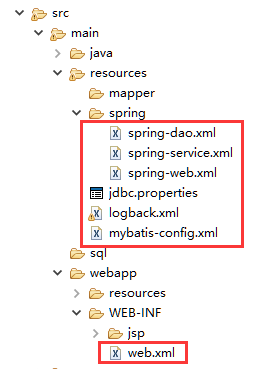
SSM框架应用实例(图书管理系统)
一开始想就这样结束教程,但是发现其实很多人都还不会把这个SSM框架用起来,特别是mybatis部分。那我现在就以最常见的“图书管理系统”中【查询图书】和【预约图书】业务来做一个demo吧!
首先新建数据库名为ssm,再创建两张表:图书表book和预约图书表appointment,并且为book表初始化一些数据,sql如下。
schema.sql
CREATE TABLE `book` (`book_id` bigint(20) NOT NULL AUTO_INCREMENT COMMENT '图书ID',`name` varchar(100) NOT NULL COMMENT '图书名称',`number` int(11) NOT NULL COMMENT '馆藏数量',PRIMARY KEY (`book_id`)
) ENGINE=InnoDB AUTO_INCREMENT=1000 DEFAULT CHARSET=utf8 COMMENT='图书表'-- 初始化图书数据
INSERT INTO `book` (`book_id`, `name`, `number`)
VALUES(1000, 'Java程序设计', 10),(1001, '数据结构', 10),(1002, '设计模式', 10),(1003, '编译原理', 10)-- 创建预约图书表
CREATE TABLE `appointment` (`book_id` bigint(20) NOT NULL COMMENT '图书ID',`student_id` bigint(20) NOT NULL COMMENT '学号',`appoint_time` timestamp NOT NULL DEFAULT CURRENT_TIMESTAMP ON UPDATE CURRENT_TIMESTAMP COMMENT '预约时间' ,PRIMARY KEY (`book_id`, `student_id`),INDEX `idx_appoint_time` (`appoint_time`)
) ENGINE=InnoDB DEFAULT CHARSET=utf8 COMMENT='预约图书表'
- 1
- 2
- 3
- 4
- 5
- 6
- 7
- 8
- 9
- 10
- 11
- 12
- 13
- 14
- 15
- 16
- 17
- 18
- 19
- 20
- 21
- 22
- 23
- 24
- 1
- 2
- 3
- 4
- 5
- 6
- 7
- 8
- 9
- 10
- 11
- 12
- 13
- 14
- 15
- 16
- 17
- 18
- 19
- 20
- 21
- 22
- 23
- 24
在entity包中添加两个对应的实体,图书实体Book.java和预约图书实体Appointment.java。
Book.java
package com.soecode.lyf.entity;public class Book {private long bookId;private String name;private int number;}
Appointment.java
package com.soecode.lyf.entity;import java.util.Date;/*** 预约图书实体*/
public class Appointment {private long bookId;private long studentId;private Date appointTime;private Book book;}
- 1
- 2
- 3
- 4
- 5
- 6
- 7
- 8
- 9
- 10
- 11
- 12
- 13
- 14
- 15
- 16
- 17
- 18
- 19
- 20
- 21
- 1
- 2
- 3
- 4
- 5
- 6
- 7
- 8
- 9
- 10
- 11
- 12
- 13
- 14
- 15
- 16
- 17
- 18
- 19
- 20
- 21
在dao包新建接口BookDao.java和Appointment.java
BookDao.java
package com.soecode.lyf.dao;import java.util.List;import com.soecode.lyf.entity.Book;public interface BookDao {/*** 通过ID查询单本图书* * @param id* @return*/Book queryById(long id);/*** 查询所有图书* * @param offset 查询起始位置* @param limit 查询条数* @return*/List<Book> queryAll(@Param("offset") int offset, @Param("limit") int limit);/*** 减少馆藏数量* * @param bookId* @return 如果影响行数等于>1,表示更新的记录行数*/int reduceNumber(long bookId);
}
- 1
- 2
- 3
- 4
- 5
- 6
- 7
- 8
- 9
- 10
- 11
- 12
- 13
- 14
- 15
- 16
- 17
- 18
- 19
- 20
- 21
- 22
- 23
- 24
- 25
- 26
- 27
- 28
- 29
- 30
- 31
- 32
- 33
- 34
- 1
- 2
- 3
- 4
- 5
- 6
- 7
- 8
- 9
- 10
- 11
- 12
- 13
- 14
- 15
- 16
- 17
- 18
- 19
- 20
- 21
- 22
- 23
- 24
- 25
- 26
- 27
- 28
- 29
- 30
- 31
- 32
- 33
- 34
AppointmentDao.java
package com.soecode.lyf.dao;import org.apache.ibatis.annotations.Param;import com.soecode.lyf.entity.Appointment;public interface AppointmentDao {/*** 插入预约图书记录* * @param bookId* @param studentId* @return 插入的行数*/int insertAppointment(@Param("bookId") long bookId, @Param("studentId") long studentId);/*** 通过主键查询预约图书记录,并且携带图书实体* * @param bookId* @param studentId* @return*/Appointment queryByKeyWithBook(@Param("bookId") long bookId, @Param("studentId") long studentId);}
- 1
- 2
- 3
- 4
- 5
- 6
- 7
- 8
- 9
- 10
- 11
- 12
- 13
- 14
- 15
- 16
- 17
- 18
- 19
- 20
- 21
- 22
- 23
- 24
- 25
- 26
- 27
- 1
- 2
- 3
- 4
- 5
- 6
- 7
- 8
- 9
- 10
- 11
- 12
- 13
- 14
- 15
- 16
- 17
- 18
- 19
- 20
- 21
- 22
- 23
- 24
- 25
- 26
- 27
提示:这里为什么要给方法的参数添加@Param注解呢?是因为该方法有两个或以上的参数,一定要加,不然mybatis识别不了。上面的BookDao接口的queryById方法和reduceNumber方法只有一个参数book_id,所以可以不用加 @Param注解,当然加了也无所谓~
注意,这里不需要实现dao接口不用编写daoImpl, mybatis会给我们动态实现,但是我们需要编写相应的mapper。
在mapper目录里新建两个文件BookDao.xml和AppointmentDao.xml,分别对应上面两个dao接口,代码如下。
BookDao.xml
<?xml version="1.0" encoding="UTF-8"?>
<!DOCTYPE mapperPUBLIC "-//mybatis.org//DTD Mapper 3.0//EN""http://mybatis.org/dtd/mybatis-3-mapper.dtd">
<mapper namespace="com.soecode.lyf.dao.BookDao"><select id="queryById" resultType="Book" parameterType="long">SELECTbook_id,name,numberFROMbookWHEREbook_id = #{bookId}</select><select id="queryAll" resultType="Book">SELECTbook_id,name,numberFROMbookORDER BYbook_idLIMIT #{offset}, #{limit}</select><update id="reduceNumber">UPDATE bookSET number = number - 1WHEREbook_id = #{bookId}AND number > 0</update>
</mapper>
- 1
- 2
- 3
- 4
- 5
- 6
- 7
- 8
- 9
- 10
- 11
- 12
- 13
- 14
- 15
- 16
- 17
- 18
- 19
- 20
- 21
- 22
- 23
- 24
- 25
- 26
- 27
- 28
- 29
- 30
- 31
- 32
- 33
- 34
- 35
- 36
- 37
- 38
- 1
- 2
- 3
- 4
- 5
- 6
- 7
- 8
- 9
- 10
- 11
- 12
- 13
- 14
- 15
- 16
- 17
- 18
- 19
- 20
- 21
- 22
- 23
- 24
- 25
- 26
- 27
- 28
- 29
- 30
- 31
- 32
- 33
- 34
- 35
- 36
- 37
- 38
AppointmentDao.xml
<?xml version="1.0" encoding="UTF-8"?>
<!DOCTYPE mapperPUBLIC "-//mybatis.org//DTD Mapper 3.0//EN""http://mybatis.org/dtd/mybatis-3-mapper.dtd">
<mapper namespace="com.soecode.lyf.dao.AppointmentDao"><insert id="insertAppointment">INSERT ignore INTO appointment (book_id, student_id)VALUES (#{bookId}, #{studentId})</insert><select id="queryByKeyWithBook" resultType="Appointment">SELECTa.book_id,a.student_id,a.appoint_time,b.book_id "book.book_id",b.`name` "book.name",b.number "book.number"FROMappointment aINNER JOIN book b ON a.book_id = b.book_idWHEREa.book_id = #{bookId}AND a.student_id = #{studentId}</select>
</mapper>
- 1
- 2
- 3
- 4
- 5
- 6
- 7
- 8
- 9
- 10
- 11
- 12
- 13
- 14
- 15
- 16
- 17
- 18
- 19
- 20
- 21
- 22
- 23
- 24
- 25
- 26
- 27
- 28
- 29
- 1
- 2
- 3
- 4
- 5
- 6
- 7
- 8
- 9
- 10
- 11
- 12
- 13
- 14
- 15
- 16
- 17
- 18
- 19
- 20
- 21
- 22
- 23
- 24
- 25
- 26
- 27
- 28
- 29
mapper总结:namespace是该xml对应的接口全名,select和update中的id对应方法名,resultType是返回值类型,parameterType是参数类型(这个其实可选),最后#{...}中填写的是方法的参数,看懂了是不是很简单!!我也这么觉得~ 还有一个小技巧要交给大家,就是在返回Appointment对象包含了一个属性名为book的Book对象,那么可以使用"book.属性名"的方式来取值,看上面queryByKeyWithBook方法的sql。
dao层写完了,接下来test对应的package写我们测试方法吧。
因为我们之后会写很多测试方法,在测试前需要让程序读入spring-dao和mybatis等配置文件,所以我这里就抽离出来一个BaseTest类,只要是测试方法就继承它,这样那些繁琐的重复的代码就不用写那么多了~
BaseTest.java
package com.soecode.lyf;import org.junit.runner.RunWith;
import org.springframework.test.context.ContextConfiguration;
import org.springframework.test.context.junit4.SpringJUnit4ClassRunner;/*** 配置spring和junit整合,junit启动时加载springIOC容器 spring-test,junit*/
@RunWith(SpringJUnit4ClassRunner.class)
@ContextConfiguration({ "classpath:spring/spring-dao.xml", "classpath:spring/spring-service.xml" })
public class BaseTest {}
因为spring-service在service层的测试中会时候到,这里也一起引入算了!
新建BookDaoTest.java和AppointmentDaoTest.java两个dao测试文件。
BookDaoTest.java
package com.soecode.lyf.dao;import java.util.List;import org.junit.Test;
import org.springframework.beans.factory.annotation.Autowired;import com.soecode.lyf.BaseTest;
import com.soecode.lyf.entity.Book;public class BookDaoTest extends BaseTest {@Autowiredprivate BookDao bookDao;@Testpublic void testQueryById() throws Exception {long bookId = 1000;Book book = bookDao.queryById(bookId);System.out.println(book);}@Testpublic void testQueryAll() throws Exception {List<Book> books = bookDao.queryAll(0, 4);for (Book book : books) {System.out.println(book);}}@Testpublic void testReduceNumber() throws Exception {long bookId = 1000;int update = bookDao.reduceNumber(bookId);System.out.println("update=" + update);}}
- 1
- 2
- 3
- 4
- 5
- 6
- 7
- 8
- 9
- 10
- 11
- 12
- 13
- 14
- 15
- 16
- 17
- 18
- 19
- 20
- 21
- 22
- 23
- 24
- 25
- 26
- 27
- 28
- 29
- 30
- 31
- 32
- 33
- 34
- 35
- 36
- 37
- 38
- 1
- 2
- 3
- 4
- 5
- 6
- 7
- 8
- 9
- 10
- 11
- 12
- 13
- 14
- 15
- 16
- 17
- 18
- 19
- 20
- 21
- 22
- 23
- 24
- 25
- 26
- 27
- 28
- 29
- 30
- 31
- 32
- 33
- 34
- 35
- 36
- 37
- 38
BookDaoTest测试结果
testQueryById

testQueryAll

testReduceNumber

AppointmentDaoTest.java
package com.soecode.lyf.dao;import org.junit.Test;
import org.springframework.beans.factory.annotation.Autowired;import com.soecode.lyf.BaseTest;
import com.soecode.lyf.entity.Appointment;public class AppointmentDaoTest extends BaseTest {@Autowiredprivate AppointmentDao appointmentDao;@Testpublic void testInsertAppointment() throws Exception {long bookId = 1000;long studentId = 12345678910L;int insert = appointmentDao.insertAppointment(bookId, studentId);System.out.println("insert=" + insert);}@Testpublic void testQueryByKeyWithBook() throws Exception {long bookId = 1000;long studentId = 12345678910L;Appointment appointment = appointmentDao.queryByKeyWithBook(bookId, studentId);System.out.println(appointment);System.out.println(appointment.getBook());}}
- 1
- 2
- 3
- 4
- 5
- 6
- 7
- 8
- 9
- 10
- 11
- 12
- 13
- 14
- 15
- 16
- 17
- 18
- 19
- 20
- 21
- 22
- 23
- 24
- 25
- 26
- 27
- 28
- 29
- 30
- 31
- 1
- 2
- 3
- 4
- 5
- 6
- 7
- 8
- 9
- 10
- 11
- 12
- 13
- 14
- 15
- 16
- 17
- 18
- 19
- 20
- 21
- 22
- 23
- 24
- 25
- 26
- 27
- 28
- 29
- 30
- 31
AppointmentDaoTest测试结果
testInsertAppointment

testQueryByKeyWithBook

嗯,到这里一切到很顺利~那么我们继续service层的编码吧~可能下面开始信息里比较大,大家要做好心理准备~
首先,在写我们的控制器之前,我们先定义几个预约图书操作返回码的数据字典,也就是我们要返回给客户端的信息。我们这类使用枚举类,没听过的小伙伴要好好恶补一下了(我也是最近才学到的= =)
预约业务操作返回码说明
| 返回码 | 说明 |
|---|
| 1 | 预约成功 |
| 0 | 库存不足 |
| -1 | 重复预约 |
| -2 | 系统异常 |
新建一个包叫enums,在里面新建一个枚举类AppointStateEnum.java,用来定义预约业务的数据字典,没听懂没关系,我们直接看代码吧~是不是感觉有模有样了!
AppointStateEnum.java
package com.soecode.lyf.enums;/*** 使用枚举表述常量数据字典*/
public enum AppointStateEnum {SUCCESS(1, "预约成功"), NO_NUMBER(0, "库存不足"), REPEAT_APPOINT(-1, "重复预约"), INNER_ERROR(-2, "系统异常");private int state;private String stateInfo;private AppointStateEnum(int state, String stateInfo) {this.state = state;this.stateInfo = stateInfo;}public int getState() {return state;}public String getStateInfo() {return stateInfo;}public static AppointStateEnum stateOf(int index) {for (AppointStateEnum state : values()) {if (state.getState() == index) {return state;}}return null;}}
- 1
- 2
- 3
- 4
- 5
- 6
- 7
- 8
- 9
- 10
- 11
- 12
- 13
- 14
- 15
- 16
- 17
- 18
- 19
- 20
- 21
- 22
- 23
- 24
- 25
- 26
- 27
- 28
- 29
- 30
- 31
- 32
- 33
- 34
- 35
- 36
- 1
- 2
- 3
- 4
- 5
- 6
- 7
- 8
- 9
- 10
- 11
- 12
- 13
- 14
- 15
- 16
- 17
- 18
- 19
- 20
- 21
- 22
- 23
- 24
- 25
- 26
- 27
- 28
- 29
- 30
- 31
- 32
- 33
- 34
- 35
- 36
接下来,在dto包下新建AppointExecution.java用来存储我们执行预约操作的返回结果。
AppointExecution.java
package com.soecode.lyf.dto;import com.soecode.lyf.entity.Appointment;
import com.soecode.lyf.enums.AppointStateEnum;/*** 封装预约执行后结果*/
public class AppointExecution {private long bookId;private int state;private String stateInfo;private Appointment appointment;public AppointExecution() {}public AppointExecution(long bookId, AppointStateEnum stateEnum) {this.bookId = bookId;this.state = stateEnum.getState();this.stateInfo = stateEnum.getStateInfo();}public AppointExecution(long bookId, AppointStateEnum stateEnum, Appointment appointment) {this.bookId = bookId;this.state = stateEnum.getState();this.stateInfo = stateEnum.getStateInfo();this.appointment = appointment;}}
- 1
- 2
- 3
- 4
- 5
- 6
- 7
- 8
- 9
- 10
- 11
- 12
- 13
- 14
- 15
- 16
- 17
- 18
- 19
- 20
- 21
- 22
- 23
- 24
- 25
- 26
- 27
- 28
- 29
- 30
- 31
- 32
- 33
- 34
- 35
- 36
- 37
- 38
- 39
- 40
- 41
- 42
- 43
- 44
- 1
- 2
- 3
- 4
- 5
- 6
- 7
- 8
- 9
- 10
- 11
- 12
- 13
- 14
- 15
- 16
- 17
- 18
- 19
- 20
- 21
- 22
- 23
- 24
- 25
- 26
- 27
- 28
- 29
- 30
- 31
- 32
- 33
- 34
- 35
- 36
- 37
- 38
- 39
- 40
- 41
- 42
- 43
- 44
接着,在exception包下新建三个文件
NoNumberException.java
RepeatAppointException.java
AppointException.java
预约业务异常类(都需要继承RuntimeException),分别是无库存异常、重复预约异常、预约未知错误异常,用于业务层非成功情况下的返回(即成功返回结果,失败抛出异常)。
NoNumberException.java
package com.soecode.lyf.exception;/*** 库存不足异常*/
public class NoNumberException extends RuntimeException {public NoNumberException(String message) {super(message);}public NoNumberException(String message, Throwable cause) {super(message, cause);}}
- 1
- 2
- 3
- 4
- 5
- 6
- 7
- 8
- 9
- 10
- 11
- 12
- 13
- 14
- 15
- 16
- 17
- 1
- 2
- 3
- 4
- 5
- 6
- 7
- 8
- 9
- 10
- 11
- 12
- 13
- 14
- 15
- 16
- 17
RepeatAppointException.java
package com.soecode.lyf.exception;/*** 重复预约异常*/
public class RepeatAppointException extends RuntimeException {public RepeatAppointException(String message) {super(message);}public RepeatAppointException(String message, Throwable cause) {super(message, cause);}}
- 1
- 2
- 3
- 4
- 5
- 6
- 7
- 8
- 9
- 10
- 11
- 12
- 13
- 14
- 15
- 16
- 17
- 1
- 2
- 3
- 4
- 5
- 6
- 7
- 8
- 9
- 10
- 11
- 12
- 13
- 14
- 15
- 16
- 17
AppointException.java
package com.soecode.lyf.exception;/*** 预约业务异常*/
public class AppointException extends RuntimeException {public AppointException(String message) {super(message);}public AppointException(String message, Throwable cause) {super(message, cause);}}
- 1
- 2
- 3
- 4
- 5
- 6
- 7
- 8
- 9
- 10
- 11
- 12
- 13
- 14
- 15
- 16
- 17
- 1
- 2
- 3
- 4
- 5
- 6
- 7
- 8
- 9
- 10
- 11
- 12
- 13
- 14
- 15
- 16
- 17
咱们终于可以编写业务代码了,在service包下新建BookService.java图书业务接口。
BookService.java
package com.soecode.lyf.service;import java.util.List;import com.soecode.lyf.dto.AppointExecution;
import com.soecode.lyf.entity.Book;/*** 业务接口:站在"使用者"角度设计接口 三个方面:方法定义粒度,参数,返回类型(return 类型/异常)*/
public interface BookService {/*** 查询一本图书* * @param bookId* @return*/Book getById(long bookId);/*** 查询所有图书* * @return*/List<Book> getList();/*** 预约图书* * @param bookId* @param studentId* @return*/AppointExecution appoint(long bookId, long studentId);}
- 1
- 2
- 3
- 4
- 5
- 6
- 7
- 8
- 9
- 10
- 11
- 12
- 13
- 14
- 15
- 16
- 17
- 18
- 19
- 20
- 21
- 22
- 23
- 24
- 25
- 26
- 27
- 28
- 29
- 30
- 31
- 32
- 33
- 34
- 35
- 36
- 37
- 1
- 2
- 3
- 4
- 5
- 6
- 7
- 8
- 9
- 10
- 11
- 12
- 13
- 14
- 15
- 16
- 17
- 18
- 19
- 20
- 21
- 22
- 23
- 24
- 25
- 26
- 27
- 28
- 29
- 30
- 31
- 32
- 33
- 34
- 35
- 36
- 37
在service.impl包下新建BookServiceImpl.java使用BookService接口,并实现里面的方法。
BookServiceImpl
package com.soecode.lyf.service.impl;import java.util.List;import org.slf4j.Logger;
import org.slf4j.LoggerFactory;
import org.springframework.beans.factory.annotation.Autowired;
import org.springframework.stereotype.Service;
import org.springframework.transaction.annotation.Transactional;import com.soecode.lyf.dao.AppointmentDao;
import com.soecode.lyf.dao.BookDao;
import com.soecode.lyf.dto.AppointExecution;
import com.soecode.lyf.entity.Appointment;
import com.soecode.lyf.entity.Book;
import com.soecode.lyf.enums.AppointStateEnum;
import com.soecode.lyf.exception.AppointException;
import com.soecode.lyf.exception.NoNumberException;
import com.soecode.lyf.exception.RepeatAppointException;
import com.soecode.lyf.service.BookService;@Service
public class BookServiceImpl implements BookService {private Logger logger = LoggerFactory.getLogger(this.getClass());@Autowiredprivate BookDao bookDao;@Autowiredprivate AppointmentDao appointmentDao;@Overridepublic Book getById(long bookId) {return bookDao.queryById(bookId);}@Overridepublic List<Book> getList() {return bookDao.queryAll(0, 1000);}@Override@Transactional/*** 使用注解控制事务方法的优点: 1.开发团队达成一致约定,明确标注事务方法的编程风格* 2.保证事务方法的执行时间尽可能短,不要穿插其他网络操作,RPC/HTTP请求或者剥离到事务方法外部* 3.不是所有的方法都需要事务,如只有一条修改操作,只读操作不需要事务控制*/public AppointExecution appoint(long bookId, long studentId) {try {int update = bookDao.reduceNumber(bookId);if (update <= 0) {throw new NoNumberException("no number");} else {int insert = appointmentDao.insertAppointment(bookId, studentId);if (insert <= 0) {throw new RepeatAppointException("repeat appoint");} else {Appointment appointment = appointmentDao.queryByKeyWithBook(bookId, studentId);return new AppointExecution(bookId, AppointStateEnum.SUCCESS, appointment);}}} catch (NoNumberException e1) {throw e1;} catch (RepeatAppointException e2) {throw e2;} catch (Exception e) {logger.error(e.getMessage(), e);throw new AppointException("appoint inner error:" + e.getMessage());}}}
- 1
- 2
- 3
- 4
- 5
- 6
- 7
- 8
- 9
- 10
- 11
- 12
- 13
- 14
- 15
- 16
- 17
- 18
- 19
- 20
- 21
- 22
- 23
- 24
- 25
- 26
- 27
- 28
- 29
- 30
- 31
- 32
- 33
- 34
- 35
- 36
- 37
- 38
- 39
- 40
- 41
- 42
- 43
- 44
- 45
- 46
- 47
- 48
- 49
- 50
- 51
- 52
- 53
- 54
- 55
- 56
- 57
- 58
- 59
- 60
- 61
- 62
- 63
- 64
- 65
- 66
- 67
- 68
- 69
- 70
- 71
- 72
- 73
- 74
- 75
- 76
- 77
- 78
- 79
- 80
- 81
- 82
- 83
- 84
- 1
- 2
- 3
- 4
- 5
- 6
- 7
- 8
- 9
- 10
- 11
- 12
- 13
- 14
- 15
- 16
- 17
- 18
- 19
- 20
- 21
- 22
- 23
- 24
- 25
- 26
- 27
- 28
- 29
- 30
- 31
- 32
- 33
- 34
- 35
- 36
- 37
- 38
- 39
- 40
- 41
- 42
- 43
- 44
- 45
- 46
- 47
- 48
- 49
- 50
- 51
- 52
- 53
- 54
- 55
- 56
- 57
- 58
- 59
- 60
- 61
- 62
- 63
- 64
- 65
- 66
- 67
- 68
- 69
- 70
- 71
- 72
- 73
- 74
- 75
- 76
- 77
- 78
- 79
- 80
- 81
- 82
- 83
- 84
下面我们来测试一下我们的业务代码吧~因为查询图书的业务不复杂,所以这里只演示我们最重要的预约图书业务!!
BookServiceImplTest.java
package com.soecode.lyf.service.impl;import static org.junit.Assert.fail;import org.junit.Test;
import org.springframework.beans.factory.annotation.Autowired;import com.soecode.lyf.BaseTest;
import com.soecode.lyf.dto.AppointExecution;
import com.soecode.lyf.service.BookService;public class BookServiceImplTest extends BaseTest {@Autowiredprivate BookService bookService;@Testpublic void testAppoint() throws Exception {long bookId = 1001;long studentId = 12345678910L;AppointExecution execution = bookService.appoint(bookId, studentId);System.out.println(execution);}}
- 1
- 2
- 3
- 4
- 5
- 6
- 7
- 8
- 9
- 10
- 11
- 12
- 13
- 14
- 15
- 16
- 17
- 18
- 19
- 20
- 21
- 22
- 23
- 24
- 25
- 26
- 1
- 2
- 3
- 4
- 5
- 6
- 7
- 8
- 9
- 10
- 11
- 12
- 13
- 14
- 15
- 16
- 17
- 18
- 19
- 20
- 21
- 22
- 23
- 24
- 25
- 26
BookServiceImplTest测试结果
testAppoint

首次执行是“预约成功”,如果再次执行的话,应该会出现“重复预约”,哈哈,我们所有的后台代码都通过单元测试啦~~是不是很开心~
咱们还需要在dto包里新建一个封装json返回结果的类Result.java,设计成泛型。
Result.java
package com.soecode.lyf.dto;/*** 封装json对象,所有返回结果都使用它*/
public class Result<T> {private boolean success;private T data;private String error;public Result() {}public Result(boolean success, T data) {this.success = success;this.data = data;}public Result(boolean success, String error) {this.success = success;this.error = error;}
}
- 1
- 2
- 3
- 4
- 5
- 6
- 7
- 8
- 9
- 10
- 11
- 12
- 13
- 14
- 15
- 16
- 17
- 18
- 19
- 20
- 21
- 22
- 23
- 24
- 25
- 26
- 27
- 28
- 29
- 30
- 31
- 1
- 2
- 3
- 4
- 5
- 6
- 7
- 8
- 9
- 10
- 11
- 12
- 13
- 14
- 15
- 16
- 17
- 18
- 19
- 20
- 21
- 22
- 23
- 24
- 25
- 26
- 27
- 28
- 29
- 30
- 31
最后,我们写web层,也就是controller,我们在web包下新建BookController.java文件。
BookController.java
package com.soecode.lyf.web;import java.util.List;import org.apache.ibatis.annotations.Param;
import org.slf4j.Logger;
import org.slf4j.LoggerFactory;
import org.springframework.beans.factory.annotation.Autowired;
import org.springframework.stereotype.Controller;
import org.springframework.ui.Model;
import org.springframework.web.bind.annotation.PathVariable;
import org.springframework.web.bind.annotation.RequestMapping;
import org.springframework.web.bind.annotation.RequestMethod;
import org.springframework.web.bind.annotation.ResponseBody;import com.soecode.lyf.dto.AppointExecution;
import com.soecode.lyf.dto.Result;
import com.soecode.lyf.entity.Book;
import com.soecode.lyf.enums.AppointStateEnum;
import com.soecode.lyf.exception.NoNumberException;
import com.soecode.lyf.exception.RepeatAppointException;
import com.soecode.lyf.service.BookService;@Controller
@RequestMapping("/book")
public class BookController {private Logger logger = LoggerFactory.getLogger(this.getClass());@Autowiredprivate BookService bookService;@RequestMapping(value = "/list", method = RequestMethod.GET)private String list(Model model) {List<Book> list = bookService.getList();model.addAttribute("list", list);return "list";}@RequestMapping(value = "/{bookId}/detail", method = RequestMethod.GET)@ResponseBodyprivate String detail(@PathVariable("bookId") Long bookId, Model model) {if (bookId == null) {return "redirect:/book/list";}Book book = bookService.getById(bookId);if (book == null) {return "forward:/book/list";}model.addAttribute("book", book);return "detail";}@RequestMapping(value = "/{bookId}/appoint", method = RequestMethod.POST, produces = {"application/json; charset=utf-8" })private Result<AppointExecution> appoint(@PathVariable("bookId") Long bookId, @Param("studentId") Long studentId) {if (studentId == null || studentId.equals("")) {return new Result<>(false, "学号不能为空");}AppointExecution execution = null;try {execution = bookService.appoint(bookId, studentId);} catch (NoNumberException e1) {execution = new AppointExecution(bookId, AppointStateEnum.NO_NUMBER);} catch (RepeatAppointException e2) {execution = new AppointExecution(bookId, AppointStateEnum.REPEAT_APPOINT);} catch (Exception e) {execution = new AppointExecution(bookId, AppointStateEnum.INNER_ERROR);}return new Result<AppointExecution>(true, execution);}}
- 1
- 2
- 3
- 4
- 5
- 6
- 7
- 8
- 9
- 10
- 11
- 12
- 13
- 14
- 15
- 16
- 17
- 18
- 19
- 20
- 21
- 22
- 23
- 24
- 25
- 26
- 27
- 28
- 29
- 30
- 31
- 32
- 33
- 34
- 35
- 36
- 37
- 38
- 39
- 40
- 41
- 42
- 43
- 44
- 45
- 46
- 47
- 48
- 49
- 50
- 51
- 52
- 53
- 54
- 55
- 56
- 57
- 58
- 59
- 60
- 61
- 62
- 63
- 64
- 65
- 66
- 67
- 68
- 69
- 70
- 71
- 72
- 73
- 74
- 75
- 76
- 77
- 1
- 2
- 3
- 4
- 5
- 6
- 7
- 8
- 9
- 10
- 11
- 12
- 13
- 14
- 15
- 16
- 17
- 18
- 19
- 20
- 21
- 22
- 23
- 24
- 25
- 26
- 27
- 28
- 29
- 30
- 31
- 32
- 33
- 34
- 35
- 36
- 37
- 38
- 39
- 40
- 41
- 42
- 43
- 44
- 45
- 46
- 47
- 48
- 49
- 50
- 51
- 52
- 53
- 54
- 55
- 56
- 57
- 58
- 59
- 60
- 61
- 62
- 63
- 64
- 65
- 66
- 67
- 68
- 69
- 70
- 71
- 72
- 73
- 74
- 75
- 76
- 77
因为我比较懒,所以我们就不测试controller了,好讨厌写前端,呜呜呜~
到此,我们的SSM框架整合配置,与应用实例部分已经结束了,我把所有源码和jar包一起打包放在了我的GitHub上,需要的可以去下载,喜欢就给个star吧,这篇东西写了两个晚上也不容易啊。
源码下载:http://github.com/liyifeng1994/ssm
2017-02-28更新:
修改预约业务代码,失败时抛异常,成功时才返回结果,控制层根据捕获的异常返回相应信息给客户端,而不是业务层直接返回错误结果。上面的代码已经作了修改,而且错误示范也注释保留着,之前误人子弟了,还好有位网友前几天提出质疑,我也及时做了修改。










